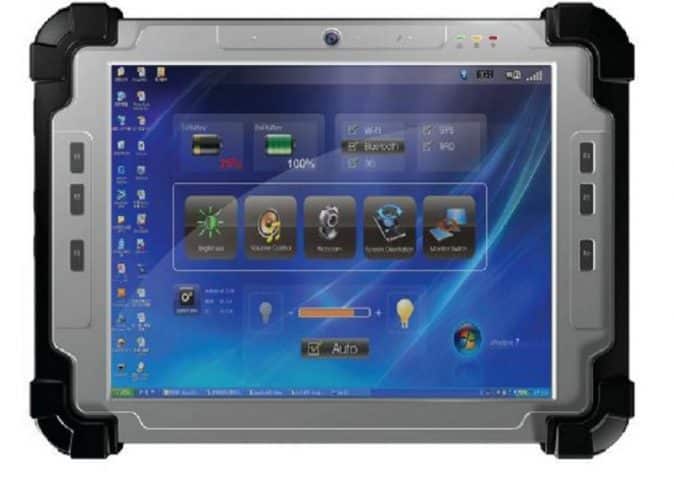
The 3 Requirements of a Rugged PC
Posted on May 15, 2023
Rugged PCs are marketed as the go-to computer for harsh industrial environments, but what is it that makes a PC rugged? Here are the three main factors.
#1: Fanless Cooling
A cooling fan is the simplest way of cooling a PC, which is why that’s the approach used in most systems. But unlike desktop computers, industrial systems are meant to run for long periods in dusty environments, where the fan becomes a liability.
Particulate matter routinely clogs the fans, requiring frequent repairs that stall work and drive up costs. Not to mention the increased power draw of a fan, besides the noise generated.
This is why a rugged PC must utilize a fanless cooling system. This is achieved by the use of specially designed fins on the chassis of the computer, not unlike a traditional heatsink found within.
The idea is to maximize the surface area and generate an airflow naturally – without leaving any vents for contaminants to get in. Of course, this also needs a specialized internal design, since the heat must be efficiently transferred into the chassis.
When done well, this results in a rugged PC that can operate without any dedicated cooling systems in harsh industrial environments, relying on its passive cooling alone. The temperatures still run a bit higher than a traditionally cooled computer, but this is why a rugged computer uses more tolerant components as well.
#2: Shock Resistance
Any piece of machinery cannot be considered rugged unless it can weather a few shocks and jolts without breaking down. Vibration resistance is an important quality for a rugged computer since industrial settings aren’t exactly the most static places.
This isn’t easy to achieve in any electronic device owing to the delicate circuitry and components involved. A big issue is moving parts, as things like fans or spinning disks in a hard drive can break down easily if the chassis is subject to vibrations.
But rugged computers cut away these weak points, replacing fans with passive cooling systems and traditional Hard Disk Drives (HDD) with Solid State Drives (SSD). This, in combination with a more durable chassis, makes these systems resistant to physical shocks.
Since poorly secured components – and dangling cables – can come loose during physical impacts, an important aspect of making a computer rugged is to implement a cable-less, seamless design.
Such a tightly packed architecture also improves the passive cooling of the system, conducting heat away rapidly to the chassis, while leaving very little space for the components to jostle about.
#3: Dust and Water Protection
Making an electronic system waterproof is another difficult task. Chemical spills and airborne contaminants or common in many industries, and a system unable to protect itself from these is going to quickly break down.
The key to this kind of protection is to reduce the number of openings in the chassis – it is only when these contaminants come in contact with the internal components that any harm is posed to the system.
This ties back to the principle of passive cooling since a system relying on a finned chassis for releasing the heat can safely eliminate vents without causing a heating issue. And that’s precisely how a rugged computer is made waterproof.
A rugged PC will sport next to no openings on its chassis apart from the ports on the back, and even these are firmly secured to prevent the ingress of dust particles or water droplets. Obviously, the degree of dust and water protection varies from system to system.
You can tell how secure a PC is in this department by its IP rating, which literally stands for Ingress Protection rating. A high IP rating translates to a waterproof rugged computer that can be deployed in applications bringing them in regular contact with fluids.
What Makes a PC Rugged?
A rugged PC hinges on three main factors – passive cooling, impact resistance, and dust/water protection. It is only with these capabilities that a rugged computer can operate in harsh industrial environments.
To this end, a rugged PC minimizes the amount of empty space or vents present on its chassis, both the minimize the ingress of contaminants and prevent the components from being affected by vibrations.
Moving parts and loose cables are completely eliminated in favor of a compact, fanless, cableless design that runs efficiently on passive cooling and can weather physical impacts. That, along with the high endurance components used, makes a PC rugged.
